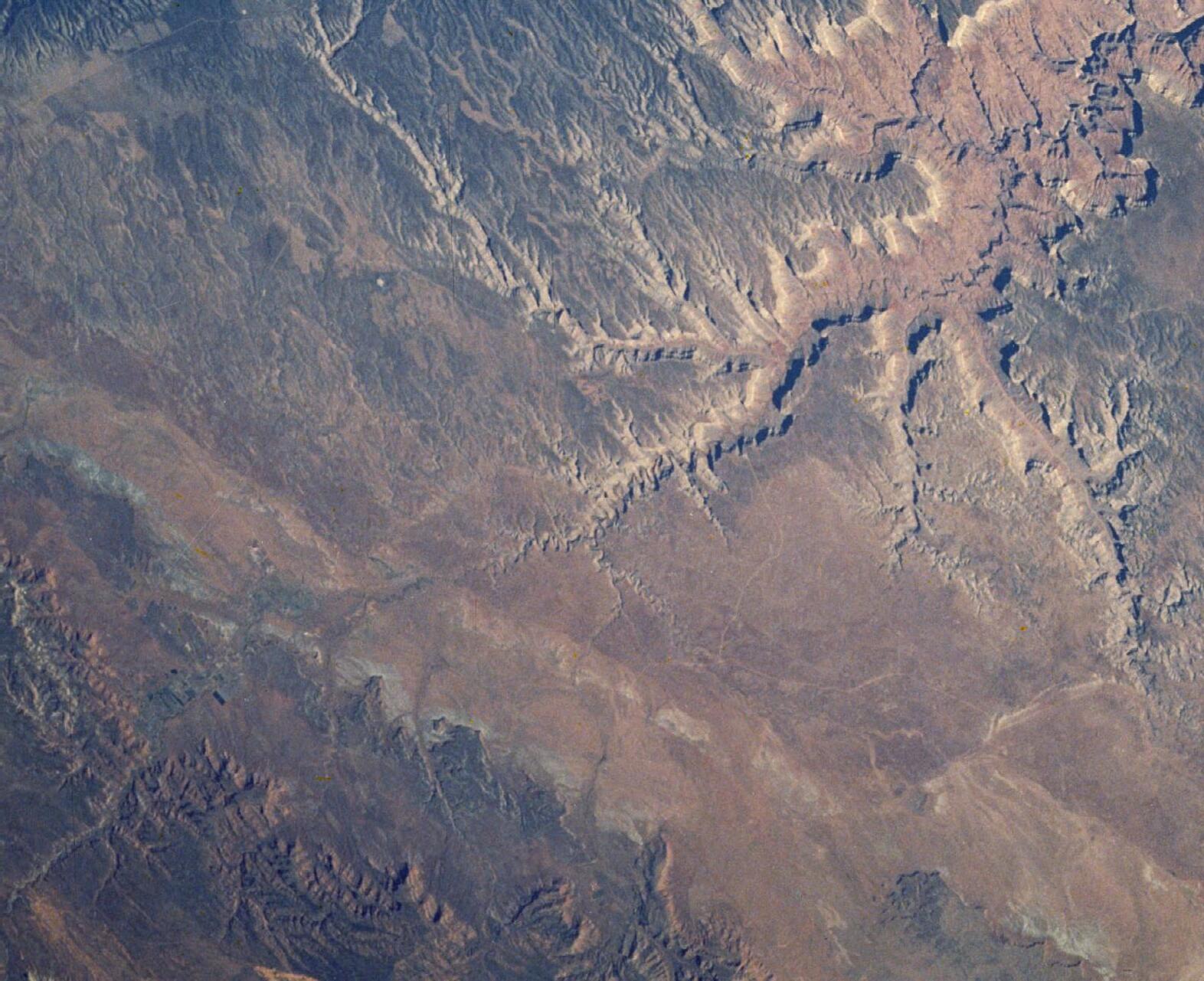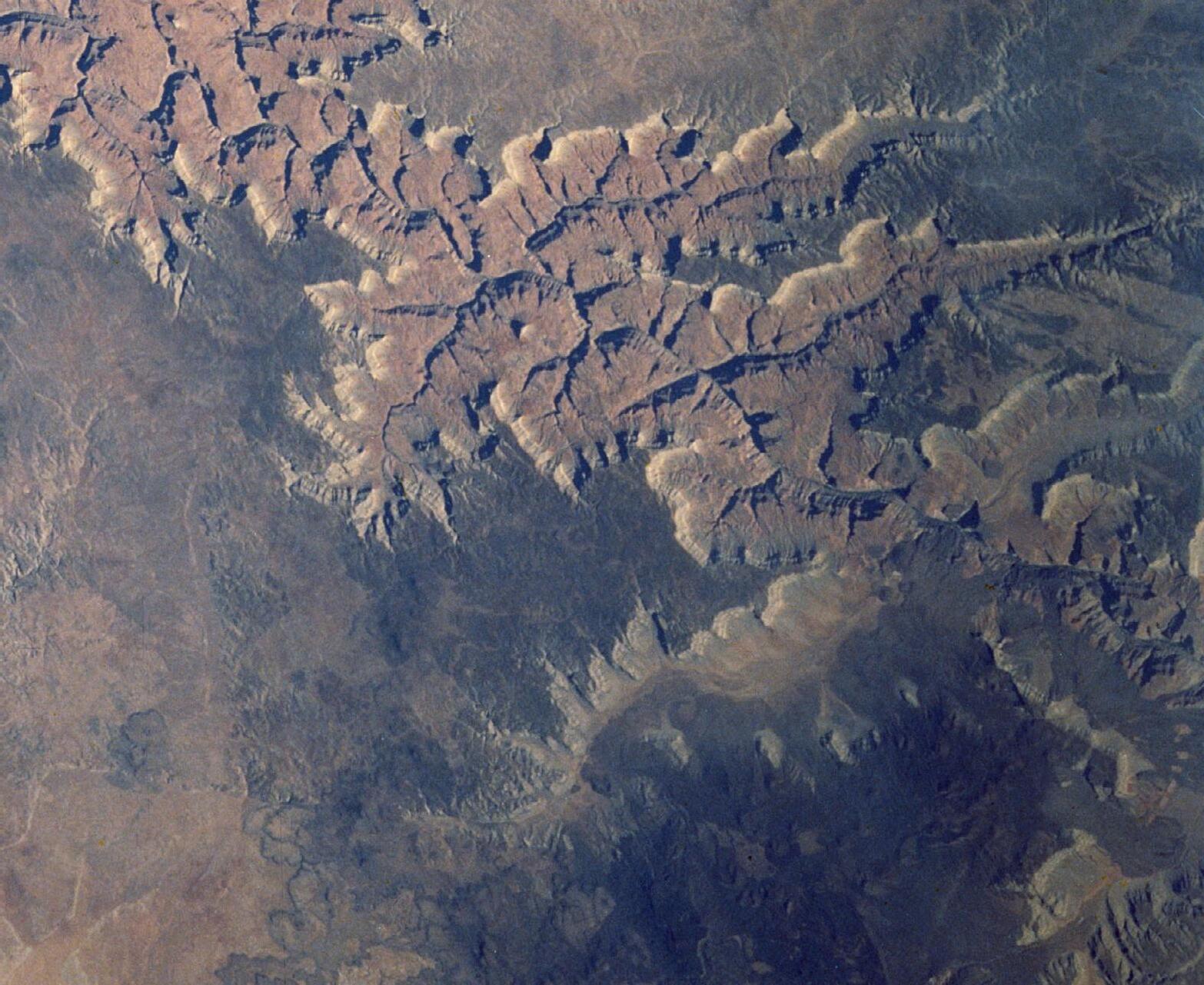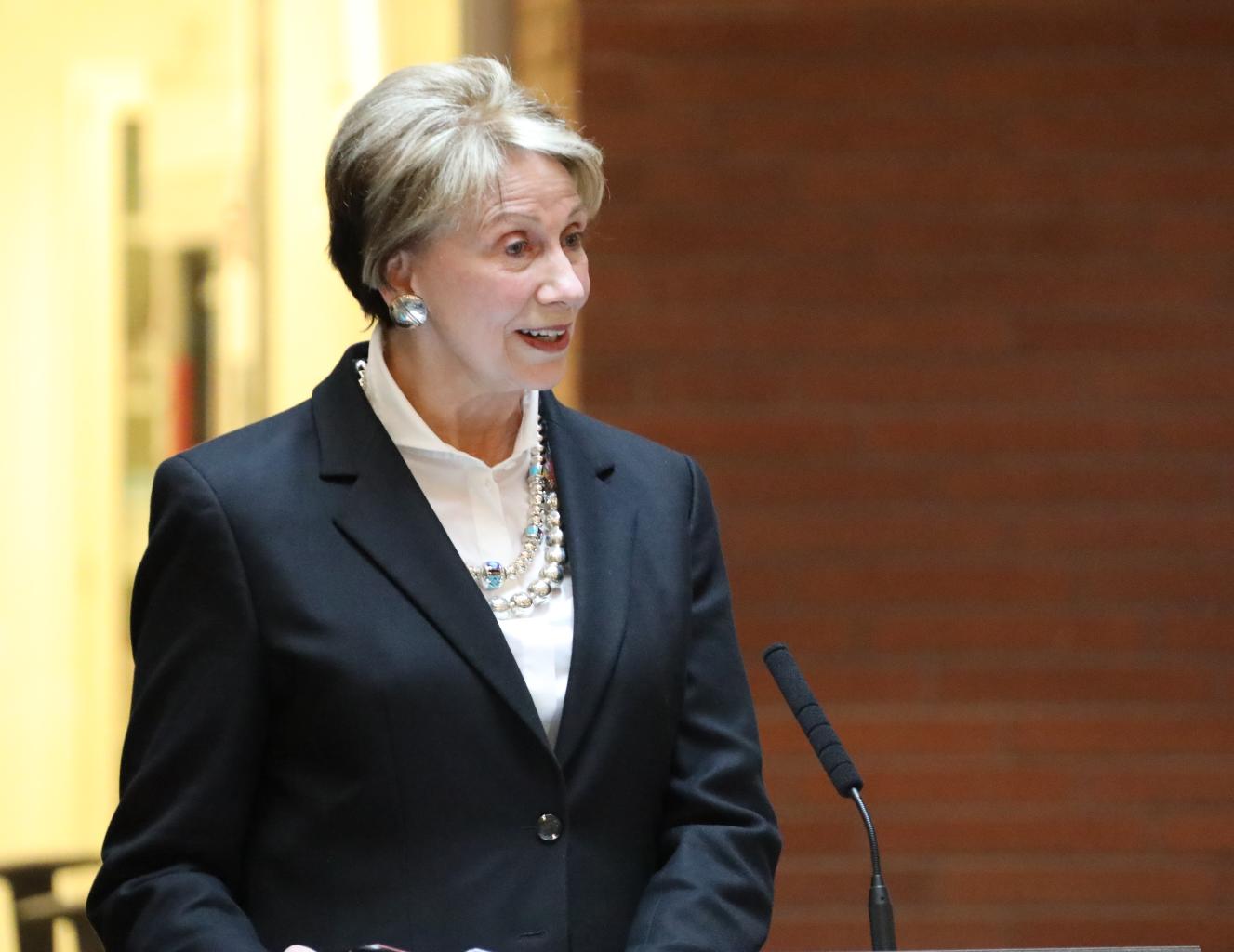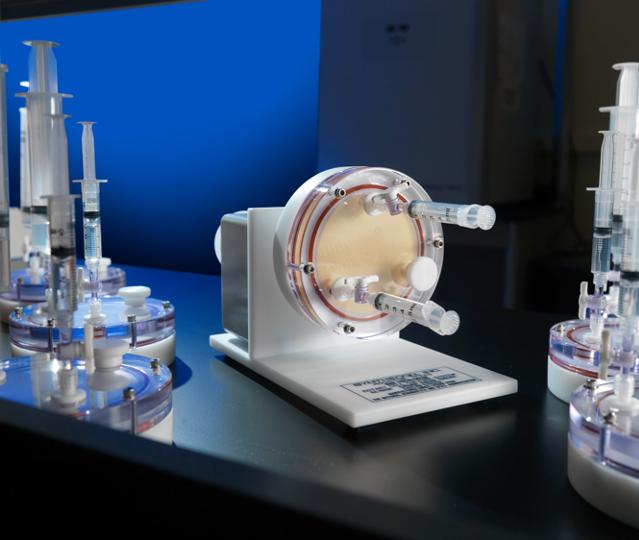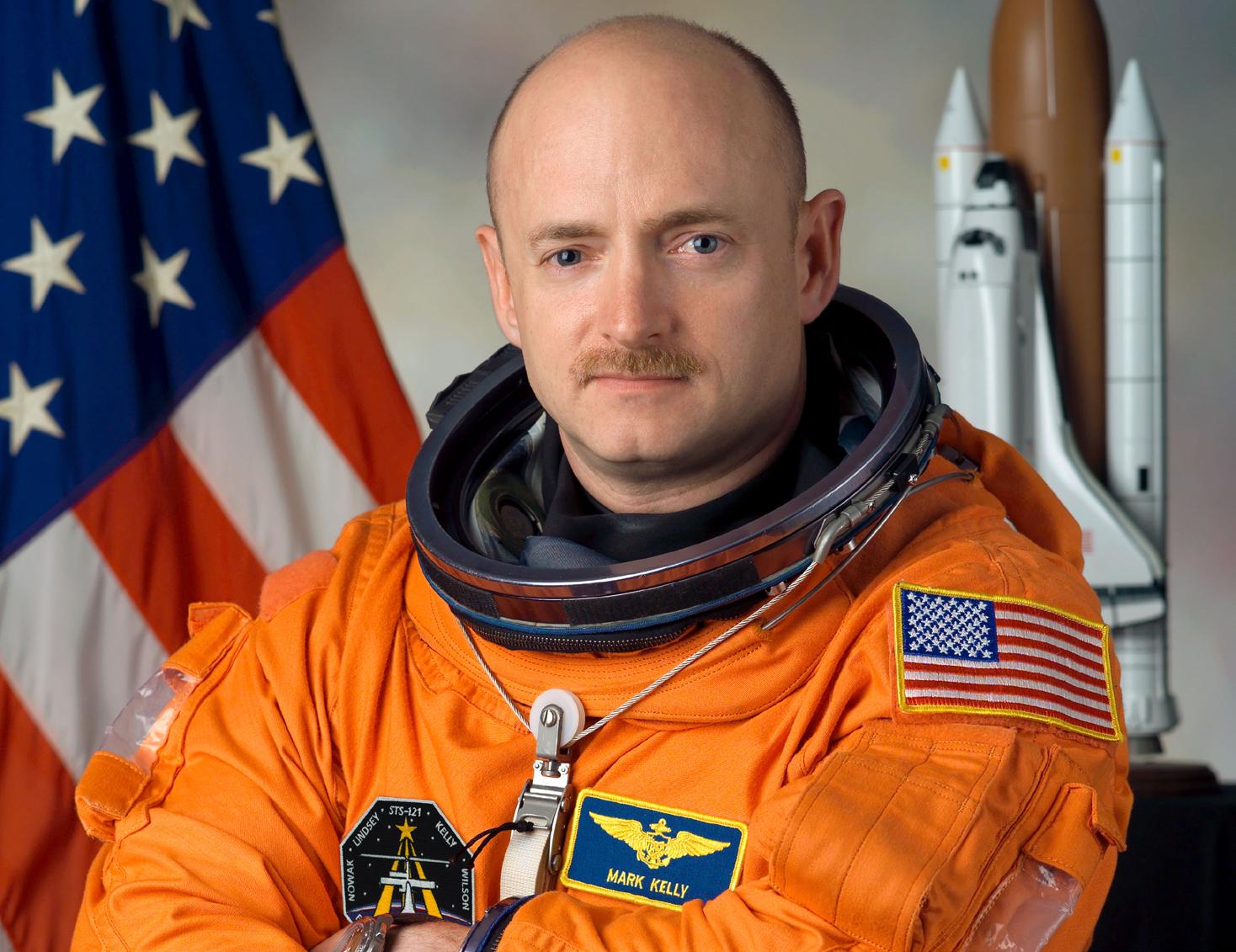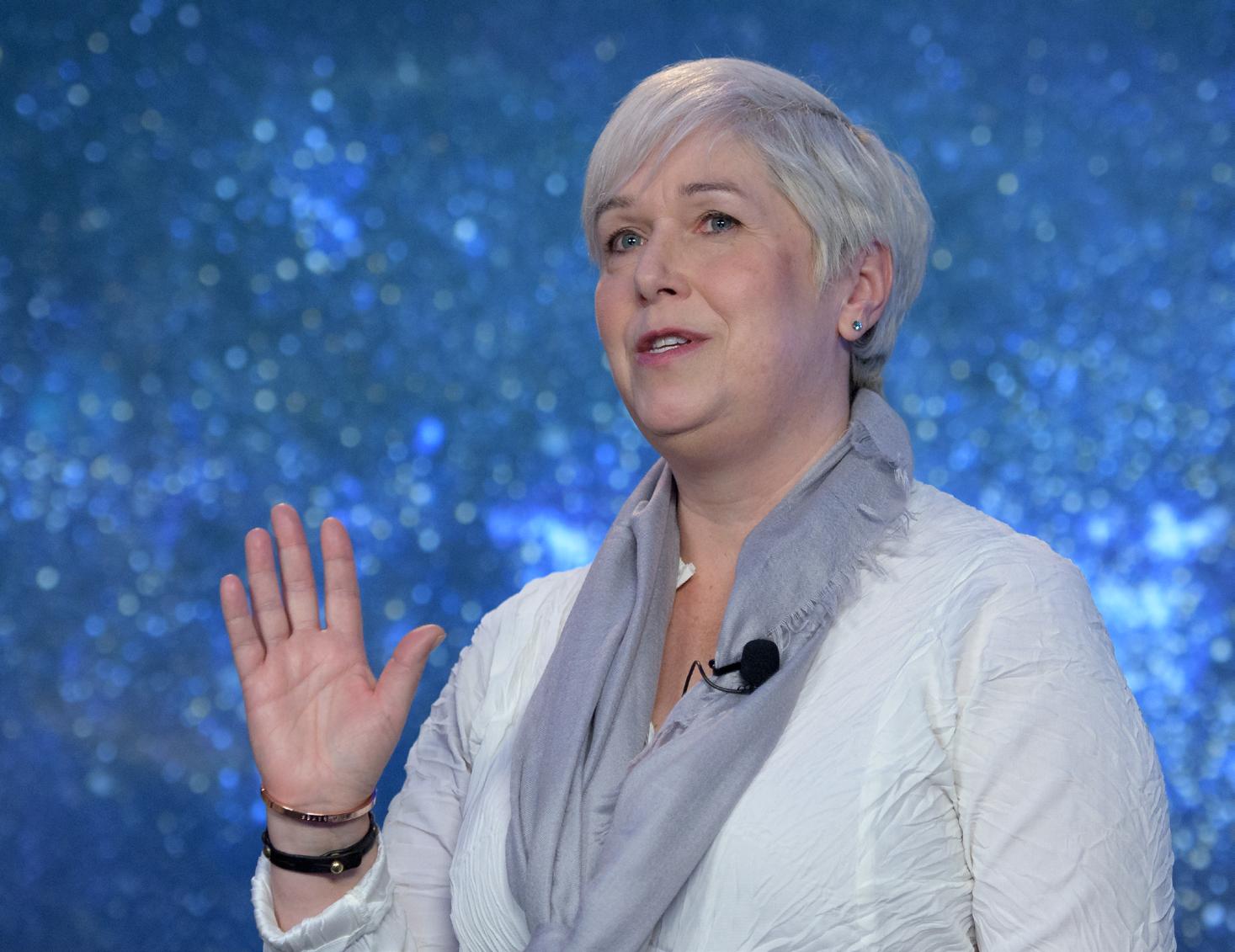APPENDIX
2023 ARIZONA SPACE SUMMIT PROGRAM
PARTNERS
• The University of Arizona
• Northern Arizona University
• Embry-Riddle Aeronautical University
• Arizona Commerce Authority
• Arizona Technology Council
• Greater Phoenix Economic Council
SPONSORS
• Greater Yuma Economic Development Corp
• Rose Law Group
WELCOME REMARKS
• Jessica Rousset, Director, ASU Interplanetary Initiative
• Lindy Elkins-Tanton, Vice President, ASU Interplanetary Initiative, Principal Investigator, NASA Psyche Mission
• Jim Bell, Director and Professor, ASU NewSpace, School of Earth and Space Exploration
• Meenakshi Wadhwa, School Director and Foundation Professor, ASU School Of Earth and Space Exploration
• Sanjeev Khagram, Dean, ASU Thunderbird School of Global Management
• Zaheer Ali, Professor of Practice, ASU Thunderbird School of Global Management
• Kyle Squires, Dean, ASU Ira A. Fulton Schools of Engineering
SPECIAL REMARKS
• Governor Katie Hobbs
• Senator Mark Kelly
KEYNOTE SPEAKERS
• Ambassador Barbara Barrett
25th Secretary of the Air Force & Space Force
• Lt Col Justin Chandler
Director, Strategic Initiatives Group
United States Space Force
THE FUTURE OF SPACE IN ARIZONA
How are Arizona’s leading academic institutions and government partners driving the space sector in the State?
MODERATOR
• Stephen Fleming, Vice President, Strategic Business Initiatives, University of Arizona
PANELISTS
• Sally Morton, Executive Vice President & Professor, ASU Knowledge Enterprise
• Andrew Aldrin, Associate Professor, Embry-Riddle Aeronautical University
• Betsy Cantwell, Senior Vice President for Research and innovation, University of Arizona
• Vic Narusis, Executive Vice President of Business Development, Arizona Commerce Authority
• Jason Wilder, Vice President for Research, Northern Arizona University
THE GROWTH AND NEEDS OF THE SPACE INDUSTRY
Where is the industry today? What are the most pressing needs, threats and opportunities for continued growth? What is the ideal ecosystem for space companies to thrive?
MODERATOR
• Greg Autry, Clinical Professor, ASU Thunderbird of Global Management
PANELISTS
• Kiah Erlich, Head of Brand Partnerships and Astronaut Sales, Blue Origin
• Mike Gold, Chief Growth Officer, Redwire Space
• John Reed, Chief Rocket Scientist, United Launch Alliance
• Eric W. Stallmer, Executive Vice President, Government Affairs and Public Policy, Voyager Space Holdings
CHARTING A NEW PATH 28 © August 2023 Arizona State University. All rights reserved. TOC
SPACE DATA, INFORMATION AND COMMUNICATIONS
Communications, space situational awareness (SSA), remote sensing, Earth observation.

MODERATOR
• Dan Bliss, Professor, ASU School of Electrical, Computer and Energy Engineering
PANELISTS
• Phil Mauskopf, Professor, ASU School of Earth and Space Exploration and Physics
• Jeremiah Pate, Founder and CEO, Lunasonde
• Ken Buer, CTO, Viasat
• Saikat Guha, Professor of Optical Sciences, Electrical Engineering and Applied Mathematics, University of Arizona
MANUFACTURING
Satellite components, space vehicles, subsystems and subcomponents, in-space assembly and manufacturing.
MODERATOR
• Binil Starly, ASU School Director and Professor, Manufacturing engineering
PANELISTS
• Chris Hodge, General Manager, Moog Space and Defense Group
• Scott Bennett, VP of Business Development and Strategic Partnerships, Terran Orbital
• Christopher Keeler, Sr. Director, Space Avionics and Electronics Solutions, Space and Intelligence Systems General Dynamics Mission Systems
• Kavan Hazeli, Ph.D., Associate Professor of Aerospace and Mechanical Engineering, Associate Professor of Biomedical Engineering, Associate Professor of Optical Sciences, University of Arizona
SPACE SCIENCE
Planetary and geological sciences, deep space exploration, microgravity research, astronomy, space medicine, health and performance.
MODERATOR
• Philip Christensen, ASU Regents Professor, School of Earth and Space Exploration
PANELISTS
• Jan Stepanek, Associate Professor of Medicine, Chair Aerospace Medicine Program, Mayo Clinic
• Cheryl Nickerson, Professor of Life Sciences, School of Life Sciences, Center for Fundamental and Applied Microbiomics, Biodesign Institute at ASU, Co-Lead, ASU Space Life Sciences and Health Initiative
• David E Trilling, Professor, Astronomy & Planetary Science, Northern Arizona University
CHARTING A NEW PATH 29 © August 2023 Arizona State University. All rights reserved. TOC
ASU HELPS CHART A COURSE FOR ARIZONA’S SPACE INDUSTRY
April 26,2003 | ASU News
According to the Big Bang Theory, a tiny speck of unimaginable energy exploded 13.8 billion years ago, creating all matter in the universe and eventually forming the galaxies, planets and stars that humans have spent the last 60 years exploring.
Arizona has been at the forefront of such exploration across our solar system and beyond. Today, the state’s space sector is poised for its own “Big Bang” of explosive expansion.A saguaro cactus reaches up toward a starry night skyArizona State University hosted the first Arizona Space Summit, bringing together industry, academia and policymakers to support a growing space sector in the state.
Engineering, the event included networking opportunities, panels and a reception dinner. The summit explored Arizona’s space ecosystem and its benefits to participants’ organizations, while providing opportunities to discuss what the industry needs to grow and thrive.
“Our goal with the summit was to provide participating companies with a deeper understanding of how Arizona is advancing the sector today,” said Jessica Rousset, deputy director of the Interplanetary Initiative and head of the Space Summit planning committee, “but also, to gain insights into how the state can further evolve its talent pool, infrastructure and business environment to maximize the growth of this important sector.”
Arizona is home to top engineering and space companies, including Boeing, Honeywell Aerospace and Northrop Grumman. In fact, Arizona is the fifth-largest employer in aerospace and defense manufacturing, with more than 1,250 companies contributing to its supply chain.
“We have an ecosystem that we’ve built here in Arizona that supports a strong sector that will last them the entire time they’re here,” said Vic Narusis, executive vice president of business development at the Arizona Commerce Authority, during “The Future of Space in Arizona” session.
of the Arizona Space Grant Consortium, a coalition that encourages research, training and education in the space industry. ASU is also the only university to be an executive member of the Commercial Spaceflight Federation.
Participants at the Arizona Space Summit wave to an overhead camera from the atrium of AS U’s Interdisciplinary Science and Technology Building IV
Participants at the Arizona Space Summit in the atrium of ASU’s Interdisciplinary Science and Technology Building IV. Photo by Chase Kassel
Empowering future space leaders
An astronomical component of growing the space industry in Arizona is investing in the future of space — students.

At the summit, ASU Space student ambassadors, undergraduate students who are passionate about space exploration and getting involved in the space industry, volunteered and attended sessions.
Lucas Barduson, a senior studying aerospace engineering, said the opportunity to hear the conversations going on around the space industry in Arizona was the most valuable part of his experience attending as a student ambassador.
This month, Arizona State University convened industry, academia and policymakers to coordinate efforts supporting this growth at the first Arizona Space Summit.
Hosted by the ASU Interplanetary Initiative, the School of Earth and Space Exploration, ASU NewSpace, the Thunderbird School of Global Management and the Ira A. Fulton Schools of
ASU has been involved in space research since the 1960s and assisting NASA missions since the ‘70s. The University of Arizona ranks fifth for NASA-funded activity and has long been at the forefront of space exploration, dating to the founding of the Lunar and Planetary Laboratory and the first Ranger missions to the moon in the 1960s. Along with the University of Arizona and Northern Arizona University, ASU is a member
Barduson poposes creating more opportunities for students to be involved with these conversations by coordinating all of the spacerelated student clubs on campus.
Additionally, a career fair hosted at the Memorial Union on April 5 allowed students to connect with space industry recruiters and learn what career options are available to them
CHARTING A NEW PATH 30 © August 2023 Arizona State University. All rights reserved. TOC
after graduation. Companies including Blue Origin, AstroForge, Katalyst Space Technologies and LinQuest Corp, among others, shared opportunities and information with interested students.
“It’s really cool to have General Dynamics Mission Systems, which is a legacy defense company, and Blue Origin, which is a new space company, talk to students together in the same room,” said Chase Kassel, a portfolio manager at the ASU Interplanetary Initiative.
For international students like Pradnesh Mhatre, who is getting his master’s degree in aerospace engineering, it can be challenging to secure jobs in the space industry in the United States. The career fair was an opportunity for him to see what options are available.
“There are many companies that just hire U.S. citizens, but there are very few companies, like Planet, which hire international students, since most of the aerospace industry comes under the defense domain,” Mhatre said.
Working together to navigate challenges
The summit opened with remarks from Lindy Elkins-Tanton, vice president of the ASU Interplanetary Initiative and principal investigator of the NASA Psyche mission; Jim Bell, director of ASU NewSpace; and Meenakshi Wadhwa, director and Foundation Professor
in the School of Earth and Space Exploration; followed by recorded remarks from Arizona Gov. Katie Hobbs.
Speakers emphasized the importance of collaboration between educational institutions, economic development groups — such as
the Arizona Commerce Authority, the Arizona Technology Council and the Greater Phoenix Economic Council — and industry partners to propel the state further into the commercial space sector.
“There’s a tremendous amount of innovative research and education that’s going on here in the planetary, astronomical and space sciences in general. It’s not surprising that this amount of activity is actually having a huge economic impact already in the state of Arizona,” Wadhwa said. “The reason we are here is to see if we can scale that to an even bigger impact.”
Panelists Jason Wilder, Vic Narusis, Betsy Cantwell, Andrew Aldrin, Sally Morton and Stephen Fleming sit on stage at the Arizona Space Summit.
In “The Future of Space in Arizona,” panelists from Arizona’s three public universities, EmbryRiddle Aeronautical University and the Arizona Commerce Authority discussed how Arizona’s leading academic institutions and government partners can financially drive the space sector in the state.
“Rocket fuel is not kerosene and oxygen, it’s cash. Instead of looking at remote sensing technology, look at where business information markets are headed, because that’s where the
revolutions are gonna happen,” said Andrew Aldrin, associate professor at Embry-Riddle and director of the Buzz Aldrin Space Institute.
In the “Growth and Needs of the Space Industry” session, representatives from Blue Origin, Redwire Space, United Launch Alliance and Voyager Space Holdings discussed the current state of the space industry and what is needed for continued growth to allow the industry to thrive.
A key enabler of growth in the commercial space sector is reducing the cost of access to space through reusable launch vehicles, according to Kiah Erlich, head of brand partnerships and astronaut sales at Blue Origin.
“We’re making space more accessible by reducing the cost of access to space, and enabling a more diverse demographic of astronauts, one that represents our demographics here on Earth. Back when I was a kid, statistically, you had about a better chance of becoming a rockstar than an astronaut,” she said.
Following this were sessions discussing how manufacturing and satellite communications companies can address the needs of the space industry, including representatives from Lunasonde, Viasat, Moog Space and Defense Group, Terran Orbital and General Dynamics Mission Systems.
“There is an insatiable demand for connectivity and we need to get more evenly distributed,” said Ken Buer, the chief technological officer of Viasat. “That will help a lot of people that don’t have access to information and don’t have access to being able to contribute in a meaningful way to science and technology in the future.”

CHARTING A NEW PATH 31 © August 2023 Arizona State University. All rights reserved. TOC
During lunch, keynote speaker Barbara Barrett, former secretary of the Air Force, gave a wide-ranging overview of Arizona’s key role in advancing space science, the space economy and national security.
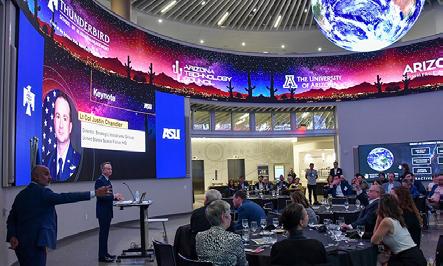
Barbara Barrett delivers an address from a podium while participants in the Arizona Space Summit enjoy lunch.

“I can’t think of a more relevant keynote speaker for this event than Ambassador Barrett, who has had a remarkable leadership journey in the private, public and academic space sectors with deep roots in Arizona,” Rousset said.
In the final session, “Space Science,” speakers from Mayo Clinic, ASU and NAU focused on biomedical life sciences, space exploration and space medicine, covering topics such as pharmacogenomics, radiation protection and manufacturing in microgravity. They emphasized the need for hardware that can operate at a high level of experimental reproducibility and modularity, as well as multidisciplinary collaboration among scientists, engineers and commercial companies.
Kyle Squires, dean the Fulton Schools, opened the final session with an overview of the seven engineering schools at ASU and their spacerelated programs.
The event rounded out with a dinner reception at the Thunderbird School of Global Management’s new Global Headquarters on ASU’s Downtown Phoenix campus. Sanjeev Khagram, director general and dean of Thunderbird, discussed Thunderbird’s Initiative for Space Leadership, Policy and Business and its work to bring space sector leaders together to address global challenges and drive collaboration in commercial space and beyond.
Several state legislators attended the event, which included a keynote speech from Lt. Col. Justin Chandler, the director of the chief of space operations’ Strategic Initiatives Group of the U.S. Space Force, and special recorded remarks from U.S. Sen. Mark Kelly.
“Our nation needs groups like this to work together to solve these complex problems we face today and will continue to face in the future,” Chandler said. “This effort will require all of us.”
Building on the success of the inaugural summit, the planning committee is working to establish it as an annual event. To keep the momentum
going in the meantime, they will release a report of key insights in the coming weeks.
“This is a great example of us working all together across the state to showcase the assets we have, and then to build on the connections that we make,” Rousset said. “We will continue to grow the Arizona space ecosystem and support an industry that will carry humanity forward in unprecedented ways.”
CHARTING A NEW PATH 32 © August 2023 Arizona State University. All rights reserved. TOC
MISSION STATUS ORGANIZATION
ACTIVATE
Advanced Spaceborne Thermal Emission and Reflection Radiometer (ASTER) on NASA’s Terra satellite
AI dashboard for food security in Maui County, Hawaii, as part of NASA Harvest
Artemis moon missions
(Swift Coat, ASU spinout, developing coating for the new xEMU space suits for it)
BepiColombo
CASE on ESA’s ARIEL mission (2028)
Deep Atmosphere Venus Investigation of Noble Gases, Chemistry, and Imaging
EFRI ELiS: Bioweathering dynamics and ecophysiology of microbially catalyzed soil genesis of Martian regolith
Emirates Mars Infrared Spectrometer (EMIRS) on UAE al-Amal orbiter
Europa Thermal Emission Imaging System (E-THEMIS) on Europa Clipper (2024)
Galactic/Extragalactic ULDB Spectroscopic Terahertz
Hayabusa 2 from JAXA
Resolution Stereo Camera on ESA’s Mars Express
In-Space Semiconductor Memory Manufacture
Intuitive Machines-1, Intuitive Machines-2, Mico-Nova Hopper
James Webb Space Telescope
JAXA Martian Moons eXploration
Jupiter Icy Moons Explorer (2023) from ESA
Lucy Thermal Emission Spectrometer (L’TES)
LunaH-Map cubesat Moon orbiter
Lunar Reconnaissance Orbiter Camera (LROC) on NASA’s LRO
CTX, CRISM on NASA’s MRO
Mars Exploration Rover Mission
CHARTING A NEW PATH 33 © August 2023 Arizona State University. All rights reserved. TOC
Completed UA
In Flight ASU
In Development ASU
In Development Swift Coat
In Development UA
ASPERA Telescope
In Flight ASU
In Development ASU
Waiting for Launch UA
mission Completed NAU, UA
(DAVINCI+) In Development ASU
CatSat Mission
DART
In Development ASU
In Flight ASU
In Development ASU
In Development ASU GUSTO In Development UA
In Flight ASU HelioSwarm
In Development UA
In Flight ASU
In Development ASU
Operating UA
In Development ASU
mission
High
InSight Mission (HiRise)
In Flight ASU, UA
In Development NAU
In Development ASU
In Flight ASU,
Inc.
KinetX
Completed ASU (PI), AZ Space
LLC, Qwaltec Inc
Technologies
In Flight ASU
In Flight ASU
Completed UA
1 OF 3
MARCI,
TABLE 1
MISSIONS
MISSIONS
MISSION STATUS ORGANIZATION
MastCam on NASA’s Curiosity Rover
Mastcam-Z on NASA's Mars 2020 Perseverance rover
Nancy Grace Roman Space Telescope (late 2020s)
Arctic Boreal Vulnerability Experiment (ABOVE)
SUDA, MASPEX on Europa Clipper (2024)
SBIR Ignite program: Reducing Cost of Space Photovoltaics via Sound-Assisted Substrate Reuse
on Korea Aerospace Research Institute’s Korea Pathfinder Lunar Orbiter
Solestial (founded by an ASU alum and based in MacroTechnology Works) providing solar blankets for Atomos Space orbital transfer vehicles on two commercial missions starting in late 2024
Spectro-Photometer for the History of the Universe, Epoch of Reionization, and Ices Explorer (SPLunar Vulkan Imaging and Spectroscopy Explorer (Lunar-VISE)HEREx) (2024)
CHARTING A NEW PATH 34 © August 2023 Arizona State University. All rights reserved. TOC
In Flight ASU
In Flight ASU MIRI
Operating UA
In Development ASU NASA
Operating NAU NASA Global Ecosystem
Operating NAU NASA GRAIL Mission Completed UA NASA Lunar Trailblazer Waiting for Launch NAU NASA's Deep Impact Mission Completed UA NASA's Mars Reconnaissance
(MRO) Operating ASU, UA NASA's Near-Earth Object
Operating UA NASA's Pandora Mission Mission Ops at UA UA Near-Earth Object Surveyor Mission (NEO) In Development NAU, UA NIRCam (JWST) Operating UA Observatory (GUSTO)
In Development ASU OSIRIS-APEX Waiting for sample return NAU, UA OSIRIS-REx Asteroid Sample Return Mission Waiting for sample return UA OSIRIS-Rex Thermal Emission Spectrometer (OTES) In Flight ASU, UA Parker Solar Probe Operating UA Phoenix CubeSat – Earth orbiter Completed ASU (PI) Phoenix Mars Lander Completed UA Psyche Mission (2023) In Development ASU (PI) REASON,
In Development ASU
(JWST)
Dynamics Investigation
Orbiter
Wide-field Infrared Survey Explorer, or NEOWISE
balloon mission (2023)
In Development Crystal Sonic ShadowCam
In Flight ASU, UA
In Development Solestial
In Development ASU
In Development UA Spitzer Completed UA
2 OF 3
SPHEREx Telescope
TABLE 1
Star-Planet Activity Research CubeSat (SPARCS) (2023)
Stardust-New Exploration of Tempel mission, or Stardust NExT mission
Super Balloon-Borne Large Aperture Submillimeter Telescope for Polarization (Super BLAST-TNG) (Paused) In
Thermal Emission Imaging System (THEMIS) on NASA’s 2001 Mars Odyssey orbiter
UAE Asteroid Mission
UAE Mars Mission “Hope”
CHARTING A NEW PATH 35 © August 2023 Arizona State University. All rights reserved. TOC
MISSION STATUS ORGANIZATION
In Development ASU (PI)
Completed UA
Development ASU
In Flight ASU, UA,
US Geological Survey Flagstaff
In Development ASU, NAU
Operating NAU
Completed UA
WISE Mission
TABLE 1 3 OF 3 MISSIONS
EDUCATION AND TRAINING
PROGRAM TYPE ORGANIZATION
Astrobiology Minor NAU
Astrobiology
UA
Astrochemistry Minor NAU
Astrogeology
NAU
Astronomical Studies Minor UA
Astronomy Minor ASU
Astronomy Minor NAU
Astronomy Club Student Club ASU
Astrophysics Minor ASU
BS Aeronautics
BS Aerospace Engineering
BS Applied Physics
BS Applied Physics
BS Astronomical and Planetary Sciences
Undergraduate Degree Embry Riddle - Prescott
Undegraduate Degree Embry Riddle - Prescott
Undegraduate Degree ASU
Undegraduate Degree UA
Undergraduate Degree ASU
BS Astronomy Undergraduate Degree UA
BS Astronomy Undergraduate Degree UA
BS Astronomy
Undegraduate Degree NAU
BS Astronomy Undegraduate Degree Embry Riddle - Prescott
BS Business Administration
BS Earth and Space Exploration
BS Earth and Space Exploration (Astrobiology and Biogeosciences)
BS Earth and Space Exploration (Astrophysics)
BS Earth and Space Exploration (Exploration Systems Design)
BS Earth and Space Exploration (Geological Sciences)
BS Geology
BS Global Business & Supply Chain Management
BS Mechanical Engineering
BS Mechanical Engineering
BS Multidisciplinary Engineering
BS Physics
BS Physics
Undegraduate Degree Embry Riddle - Prescott
Undegraduate Degree ASU
Undegraduate Degree ASU
Undegraduate Degree ASU
Undegraduate Degree ASU
Undegraduate Degree ASU
Undergraduate Degree NAU
Undegraduate Degree Embry Riddle - Prescott
Undegraduate Degree NAU
Undegraduate Degree Embry Riddle - Prescott
Undegraduate Degree NAU
Undegraduate Degree NAU
Undegraduate Degree ASU
CHARTING A NEW PATH 36 © August 2023 Arizona State University. All rights reserved. TOC
Minor
Minor
1 OF 4
TABLE 2
PROGRAM TYPE ORGANIZATION
BS Physics
Undegraduate Degree NAU
BS Physics Undegraduate Degree UA
BS Physics and Astrophysics
BS Space Physics
BS Technological Leadership
BSE Aerospace Engineering (Aeronautics)
BSE Aerospace Engineering (Astronautics)
BSE Aerospace Engineering (Autonomous Vehicle Systems)
Capstones (Projects in partnership with NASA)
Career and Technical Education (CTE) and Joint Technical Education Districts (JTED)
Undergraduate Degree NAU
Undegraduate Degree Embry Riddle - Prescott
Undergraduate Degree ASU
Undergraduate Degree ASU
Undergraduate Degree ASU
Undergraduate Degree ASU
Course ASU
Arizona is home to 14 CTE and JTED districts throughout the state with 99 participating school districts. CTE education provides students with necessary career training in partnership with business and industry to educate Arizona's future workforce. Courses offered in the state that benefit the space economy include, but are not limited to, automation and robotics, electronic technologies, engineering, laboratory assisting, precision machining, software and app design, technology devices maintenance, and welding technologies.
Desert WAVE robotics team
Disruptive Innovation & Technology Evolution
Ethical Issues in Technology (Space Topics)
Executive Master of Global Management with a Specialization in Space Leadership, Business and Policy
Fundamentals of Space Leadership
Helios Rocketry
Manufacturing Engineering (Interplanetary Manufacturing) (In Development)
MGM Executive Master of Global Management: Space Leadership, Business, and Policy
MNS Physics
MS Aerospace Engineering
MS and PhD Astronomy and Astrophysics (Masters only available for those permitted to PhD program)
MS Applied Physics
Degree
CHARTING A NEW PATH 37 © August 2023 Arizona State University. All rights reserved. TOC
Student
ASU
Club
Course ASU
Course ASU
ASU
Certificate
ASU
Certificate
Student
ASU
Club
Concentration ASU
Graduate
ASU
Minor UA
Minor Optical Sciences
Graduate Degree ASU
Graduate
ASU
Degree
Greaduate
UA
Degree
Graduate
NAU
Degree
TABLE 2 2 OF4 EDUCATION AND TRAINING
EDUCATION AND TRAINING
PROGRAM TYPE ORGANIZATION
MS Applied Physics and Materials Science
MS Astrophysics and Astronomy
MS Experience Design MIX Center/Concentration Space Architecture and Extreme Environment
MS Exploration Systems Design
MS Exploration Systems Design (Instrumentation)
MS Exploration Systems Design (Sensor Networks)
MS Exploration Systems Design (Systems Engineering)
PhD
PhD
Systems Design (Sensor Networks)
Systems Design (Systems Engineering)
CHARTING A NEW PATH 38 © August 2023 Arizona State University. All rights reserved. TOC
Graduate Degree NAU
Graduate
ASU
Degree
Graduate
ASU
Degree
Graduate
ASU
Degree
Graduate
ASU
Degree
Graduate
ASU
Degree
Graduate Degree ASU
Graduate Degree ASU
MS Geological Sciences
Graduate Degree ASU
Materials Science Graduate Degree NAU
Natural Science
Graduate Degree ASU MS Optical Sciences Graduate Degree UA MS Optical Sciences + MBA (Dual Degree) Graduate Degree UA MS Optical Sciences: Optomechanical Engineering Graduate Degree UA
Optical Sciences: Quantum
& Engineering Graduate Degree UA MS Robotics and Autonomous Systems Graduate Degree ASU NASA Space Grant Program ASU, NAU, UA National Undergraduate Research Observatory Astronomy Club Program NAU Next Level Devils Student Club ASU NSF Partnership in Astronomy and Astrophysics Research Education’s "Pathways to the Skies” Program NAU NSF Research Experiences Program NAU Optical Sciences Certificate UA PhD Aerospace Engineering Graduate Degree ASU PhD Applied Physics and Materis Science Graduate Degree NAU PhD Astronomy Graduate Degree UA PhD Astronomy and Planetary Science Graduate Degree NAU PhD Astrophysics Graduate Degree ASU
Exploration
Graduate Degree ASU
MS Human Systems Engineering (Intelligent Systems)
MS
MS
(Earth and Space Sciences)
MS
Information Science
PhD
Systems Design (Instrumentation)
Exploration
Graduate Degree ASU
Exploration
Graduate Degree ASU
Geological
Graduate Degree ASU
PhD
Sciences
TABLE 2 3 OF 4
TABLE 2 4 OF 4
EDUCATION AND TRAINING
PROGRAM TYPE ORGANIZATION
PhD Optical Sciences
Graduate Degree UA
PhD Physics Greaduate Degree UA
PhD Physics Graduate Degree ASU
PhD Planetary Sciences Graduate Degree UA
Physics Minor NAU
Planetary Science Minor UA
Planetary Sciences Certificate ASU
Psyche Free Online Courses Course ASU
Satellite Command and Control Certificate ASU
SEDS: Rocketry Division Student Club ASU
Space Architecture Studio IV Course ASU
Space Business and Entrepreneurship Course ASU
Space Business Association Student Club ASU
Space Leadership, Business, and Policy Certificate ASU
Space Student Ambassadors Program ASU
Students for the Exploration and Development of Space Student Club ASU
Sun Devil Rocketry Student Club ASU
Sun Devil Satellite Lab Student Club ASU
Technological Leadership Minor ASU
Technology, Innovation and Entrepreneurship Course ASU
Women of Aeronautics and Astronautics Student Club ASU
CHARTING A NEW PATH 39 © August 2023 Arizona State University. All rights reserved. TOC
FACILITY DESCRIPTION ORGANIZATION
100K and 10K Cleanroom Facilities
Spaceflight-certified cleanrooms for assembly and testing of instruments and spacecraft for missions beyond Earth. One cleanroom is rated at 100K (no more than 100,000 dust particles per cubic meter), the other is rated at 10K (no more than 10,000 particles).
Aberration Corrected Transmission Electron Microscope
Accessory Minerals (Apatite, Zircon) IN-situ Geochronology/ geochemistry lab (AMAZING)
Anbarlab
Applied Research Building
One of the premier microscopy facilities in the United States dedicated to understanding the behavior of materials at the atomic level.
Equipped with a Triple Quadrupole (QQQ) ICP-MS mass spectrometer (Agilent 8900).
A diverse group of graduate and undergraduate students, postdocs, and research scientists from the fields of geology, chemistry, forensic science, and education committed to exploring the world and developing applied solutions to new challenges.
The Applied Research Building (ARB) is a highly specialized, one-of-a-kind, 89,000-square-foot facility that pairs new applied research capabilities with stateof-the-art equipment and technology and brings together several interdisciplinary university programs under one roof.
It will provide regionally unique capabilities for the university, allow for expansion of industry and advanced manufacturing partnerships, and turn research and discovery into practical, real-world solutions that produce societal impact.
Spaceflight-certified cleanrooms for assembly and testing of instruments and spacecraft for missions beyond Earth. One cleanroom is rated at 100K (no more than 100,000 dust particles per cubic meter), the other is rated at 10K (no more than 10,000 particles).
AstroBio Center
Astrobiology, Molecular Biology, and Proteomics Lab
ASU Core Research Facilities, including Macro Technology Works Includes equipment for manufacturing a variety of devices in semiconductors, solar technology and more that private businesses can rent.
Carbon and Nitrogen Dynamics Lab (CaNDy LaB)
An interdisciplinary group of graduate students, undergraduate students, researchers, and postdocs working with Professor Hilairy Hartnett at Arizona State University. Dr. Hartnett is an oceanographer and organic geochemist whose research focuses on carbon and nitrogen cycling in aquatic systems.
Center for Education Through eXploration
Center for Meteorite Studies
Cosmogenic and Short-Lived Isotopes Lab
Distributed Robotic Exploration and Mapping Systems Lab (DREAMS)
Dryland Ecosystems Lab
Brings science educators, technologists, artists, and researchers together to design and build cutting edge digital learning experiences.
One of the world's largest university-based meteorite collections.
Builds teams of autonomous bots and drones that gather environmental data.
CHARTING A NEW PATH 40 © August 2023 Arizona State University. All rights reserved. TOC
ASU
ASU
ASU
ASU
ASU
ASU
UA
ASU
ASU
ASU
ASU
ASU
ASU
ASU
ASU
1
INFRASTRUCTURE TABLE 3
OF 5
FACILITY DESCRIPTION
Earth Dynamics Observatory
Combines the University’s strengths in space exploration, instrumentation, and earth sciences to learn more about our planet. Collecting information about Earth from space provides new information about how Earth systems work, how they are changing, and how humans might anticipate and respond to changes. Integrating UA’s expertise across diverse disciplines, in partnership with agencies and industry, allows researchers to collaboratively pose questions, design instruments to acquire the data needed to answer the questions, get the instruments into space to collect and transmit the data, analyze the data, and interpret its meaning. The results, especially when combined with ground-based data, will place the university at the forefront of understanding and educating others about how our planet functions and how we can mitigate and respond to hazards.
Earth Surface Processes and Geomorphology Lab
Engineering Flight Hardware Lab
Experimental Petrology and Igneous Processes Center (EPIC) Studies magma: how and why it forms, its composition and timescales, and the resulting consequences for planetary differentiation.
Experimental Volcanology Lab
Eyring Materials Center Electron Microprobe
GEOPIG Biogeochemistry Lab
Group 18 Labs
High Pressure Diamond-anvil Lab
Simulates volcanic flows.
Provides academic and industry researchers with open access to advanced facilities and equipment for materials characterization, surface, optical and structural analysis, elemental composition, and high-resolution electron microscopy.
Equipped with High Resolution Inductively Coupled Plasma Mass Spectrometer (HR-ICP-MS), ion chromatography (IC), gas chromatography (GC) and microwave digestion systems.
Houses analytical systems for both quadrupole and magnetic sector mass spectrometry.
Examines the internal structures and processes of various planets, including Earth, Solar-system planets, and exoplanets, by examining the properties and behaviors of their constituent materials, which include hydrogen, water, silicates, oxides, hydroxides, carbides, hydrides, and metal alloys.
Hubble Data Lab
Hydrogen Gas Loading Facility
Hydrothermal Organic Geochemistry (HOG) Lab
Interplanetary Initiative Lab
Isotope Cosmochemistry and Geochronology Lab
Recreates temperatures and pressures
Includes collaboration space, electronics development, fabrication, assembly and test. Test facilities include a cubesat shaker table, a thermal vacuum chamber, a small clean room, a roof deck, and anechoic chamber.
Analyzes the stable and radiogenic isotopic compositions of extraterrestrial samples to understand the processes and timescales involved in the formation and early evolution of the Solar System and the rocky bodies within it.
CHARTING A NEW PATH 41 © August 2023 Arizona State University. All rights reserved. TOC
UA
ASU
ASU
ASU
ASU
ASU
ASU
ASU
ASU
ASU
ASU
ASU
ASU
ASU
ORGANIZATION TABLE 3 2 OF 5 INFRASTRUCTURE
FACILITY DESCRIPTION
John M. Cowley Center for High Resolution Electron Microscopy Houses a dozen electron microscopes that can probe the physical, electronic, and chemical structure of matter on an atomic scale. Instruments and techniques include focused ion beam (FIB) microscopes, electron microprobe, scanning electron microscopy, transmission electron microscopy, scanning transmission electron microscopy, and aberration-corrected electron microscopy.
Kitt Peak National Observatory
Laboratory for Astronomical Space Instrumentation
Low-frequency Cosmology (LoCo) Lab
The Kitt Peak National Observatory is a United States astronomical observatory located on Kitt Peak of the Quinlan Mountains in the Arizona-Sonoran Desert on the Tohono Oʼodham Nation, 88 kilometers west-southwest of Tucson, Arizona.
Develops radio instrumentation and conducts astronomical observations to study the evolution of the early Universe and the first stars and galaxies. Applies technical experience in large data analysis to study new approaches for helping improve science learning and public outreach.
ORGANIZATION
Low-frequency Cosmology Lab
Lunar and Planetary Laboratory (LPL)
Develops radio instrumentation and conducts astronomical observations to study the evolution of the early Universe and the first stars and galaxies.
LPL was founded in 1960 by planetary astronomer Gerard P. Kuiper, after whom the Kuiper Belt of icy objects in the outer Solar System and the Kuiper Prize (the top honor of the world’s largest organization of planetary scientists) are named. Most of the original work was based on observations using telescopes, but as the exploration of the planets expanded in scope, so did LPL. In 1973, the Department of Planetary Sciences was formed, to educate succeeding generations of planetary scientists. The Lunar and Planetary Laboratory has been involved in almost every interplanetary spacecraft sent.
Lunar Polar Hydrogen Mapper Development and Test Lab
Home of the LunaH-Map mission researching the abundance of water-ice on the Moon.
Lunar Reconnaissance Orbiter Camera Science Operations Center Home of the Lunar Reconnaissance Orbiter Camera (LROC) mission that captures high resolution black and white images and moderate resolution multi-spectral images of the Lunar surface.
Mars Space Flight Facility
Metals, Environmental and Terrestrial Analytical Laboratory (METAL)
Microbiology of the Deep (MOD)
Part of the Christensen Research Group which operates robotic missions to Mars and other solar system targets.
A dual-location analytical facility with the instruments and resources to support research across many fields, including anthropology, chemistry, biology, forensics, geology, environmental studies, and ecology.
Incorporates elements of microbial ecology, astrobiology, geobiology, oceanography, and geochemistry to ask questions about the microbial role in Earth-life interactions
CHARTING A NEW PATH 42 © August 2023 Arizona State University. All rights reserved. TOC
ASU
UA/NoirLab
ASU
ASU
ASU
UA
ASU
ASU
ASU
ASU
ASU
TABLE 3 3 OF 5 INFRASTRUCTURE
FACILITY
Mission Integration Lab
DESCRIPTION
The Mission Integration Lab accommodates balloon-borne astronomy, which fills an important niche between ground-based observatories and space telescopes, providing an ideal way to deploy telescopes and other instruments to altitudes where they experience less interference from the Earth's atmosphere. Modern balloon-borne observatories offer space-like views of the universe in missions that require a fraction of the time and cost of a full space mission. These missions are also a platform to test cutting-edge technologies that will define future orbital missions.
NASA Mission Operations Facility
Multi-anvil Press Lab
OSIRIS-REx Thermal Emission Spectrometer Lab
Planetary Aeolian Lab
Planetary Aeolian Laboratory
Planetary Geographic Information Systems (GIS) Lab
Currently operates three multi-anvils.
Built the Thermal Emission Spectrometer as part of the OSIRIS-REx mission, launched to the asteroid, Bennu.
A facility used for conducting controlled experiments and simulations of aeolian processes (windblown particles) under different planetary atmospheric environments, including Earth, Mars, and Saturn’s moon Titan.
A facility used for conducting controlled experiments and simulations of aeolian processes (windblown particles) under different planetary atmospheric environments, including Earth, Mars, and Saturn’s moon Titan.
House a 6-computer GIS laboratory, where faculty, students, and visiting researchers can work on planetary mapping projects with a goal to provide GISready datasets of the individual planetary bodies imaged by planetary missions and give assistance to researchers in completing their work.
Planetary Surface Imaging Science Lab
Planetary Surfaces Spectroscopy Lab
Richard F. Caris Mirror Laboratory
At the University of Arizona's Richard F. Caris Mirror Laboratory, a team of scientists and engineers are making giant, lightweight mirrors of unprecedented power for a new generation of optical telescopes.The Richard F. Caris Mirror Lab continues its impressive history of successful, groundbreaking mirror castings with the Giant Magellan Telescope. Upon completion, this telescope will be the largest and most advanced earth-based telescope in the world. Currently, five of the seven 8.4 meter segmented mirrors have been cast. The first and second mirrors are complete and the other five are in various stages of production.
Ronald Greeley Center for Planetary Studies
Secondary Ion Mass Spectrometry Community Facility
One of an international network of 17 Regional Planetary Image Facility (RPIF) data centers, established by NASA in 1977 to archive planetary images for use by the scientific and educational communities.
Home to a Camexa 6f SIMS and Cameca NanoSIMS. These state-of-the-art instruments are dedicated to studying materials (minerals, microbes, volatiles) helping advance our knowledge of the world around us.
CHARTING A NEW PATH 43 © August 2023 Arizona State University. All rights reserved. TOC
UA
ASU
ASU
ASU
ASU
ASU
ASU
ASU
ASU
UA
ASU
ASU
ORGANIZATION TABLE 3 4 OF 5 INFRASTRUCTURE
Secondary Ion Mass Spectrometry Lab (SIMS) / Nanoscale
Secondary Ion Mass Spectrometry Lab (NanoSIMS)
Space4
Steward Observatory
Housed within Research, Innovation and Impact, Space4 is a group of researchers with trusted and demonstrated expertise in science and engineering. Housed within Research, Innovation and Impact, Space4 is a group of researchers with trusted and demonstrated expertise in science and engineering. Together, we are committed to ensuring responsible, peaceful, and sustainable access to and exploration of all orbital regimes in the Earth-Moon system for future generations.
Steward Observatory is the research arm of the Department of Astronomy at the University of Arizona. Its offices are located on the UA campus in Tucson, Arizona. Established in 1916, the first telescope and building were formally dedicated on April 23, 1923.
Terahertz Instrumentation Lab
The NASA Center for Astronomy Education
Specializes in the design, construction and deployment of THz and similar frequency electronics for astrophysics and other remote sensing applications.
The Center for Astronomy Education (CAE) is devoted to improving teaching and learning in general education college-level Earth, Astronomy and Space Science (Astro 101) by conducting fundamental research on students’ beliefs and conceptual and reasoning difficulties related to astronomy, and instructor implementation related to teaching Astro 101. We use the results of our research to inform the development of research-validated curriculum and assessment materials. These materials frame our professional development CAE Teaching Excellence Workshops, which are designed to support instructors in their efforts to create effective active learning classrooms, whether in-person or online.
UA Space Institute
The University of Arizona Space Institute (UASI) serves as an umbrella-organization to facilitate the work of UA’s space-oriented researchers, providing seed grants for major missions and other space projects in development, coordinating technical staff, helping to build the necessary infrastructure, and operating the Applied Research Building. LPL scientists have played important roles on spacecraft instrument and mission teams since our founding in 1960.
Undergraduate Research Opportunities Consortium (UROC) Provides participants with excellent research training and graduate school preparation through:
research experience under the guidance of a faculty mentor professional development and graduate admission workshops social networking and a community building with like-minded peers poster session, oral presentation, and abstract writing a free comprehensive GRE workshop and a $5,000* summer stipend.
CHARTING A NEW PATH 44 © August 2023 Arizona State University. All rights reserved. TOC
ASU
ASU
UA
ASU
UA
UA
ASU
TABLE
5 OF 5 INFRASTRUCTURE
W.M. Keck Foundation Lab for Environmental Biogeochemistry ASU
FACILITY DESCRIPTION ORGANIZATION
3
CHARTING A NEW PATH 45 © August 2023 Arizona State University. All rights reserved. TOC AZSPACESUMMIT.COM
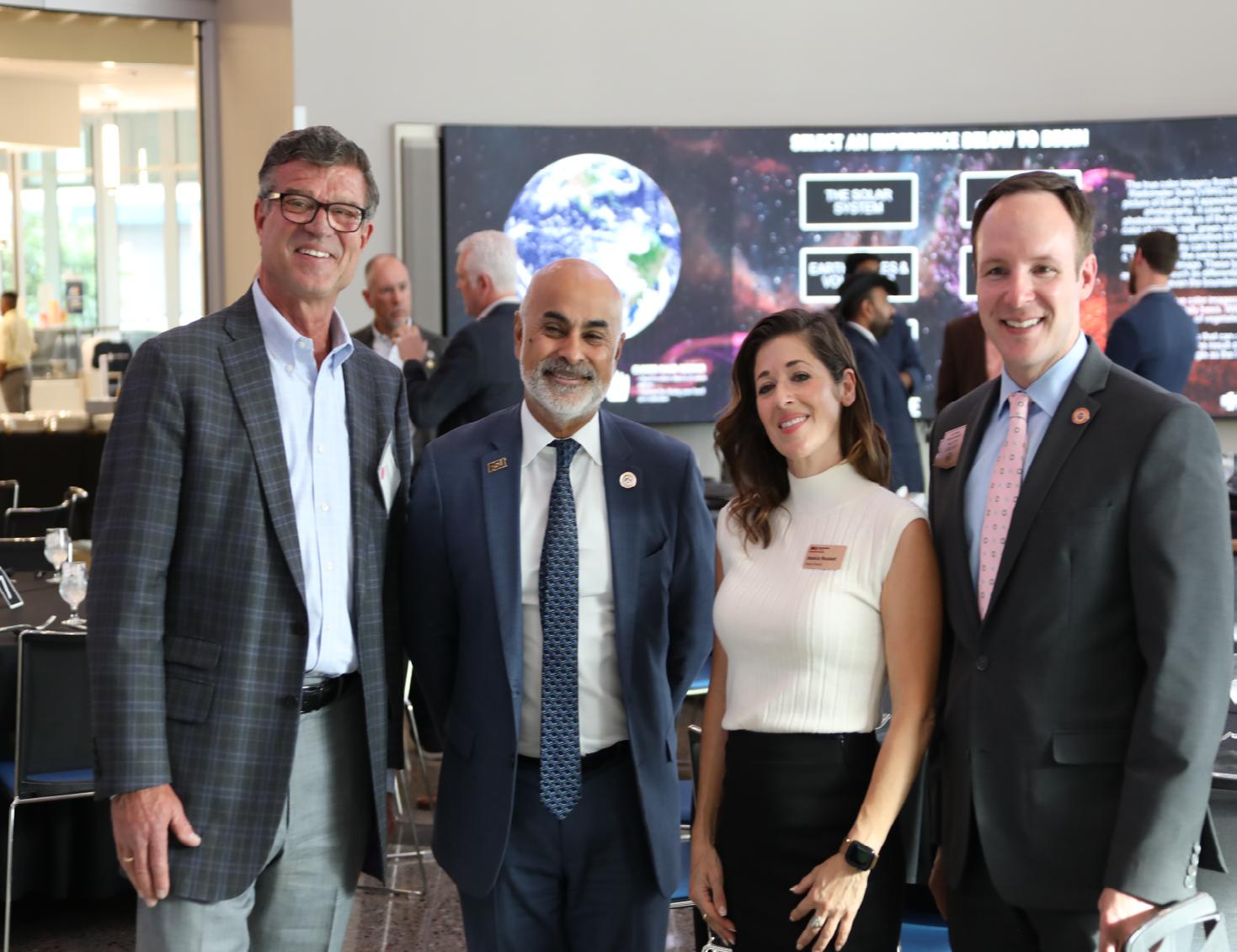
CHARTING A NEW PATH 46 © August 2023 Arizona State University. All rights reserved. TOC

CHARTING A NEW PATH 47 © August 2023 Arizona State University. All rights reserved. TOC

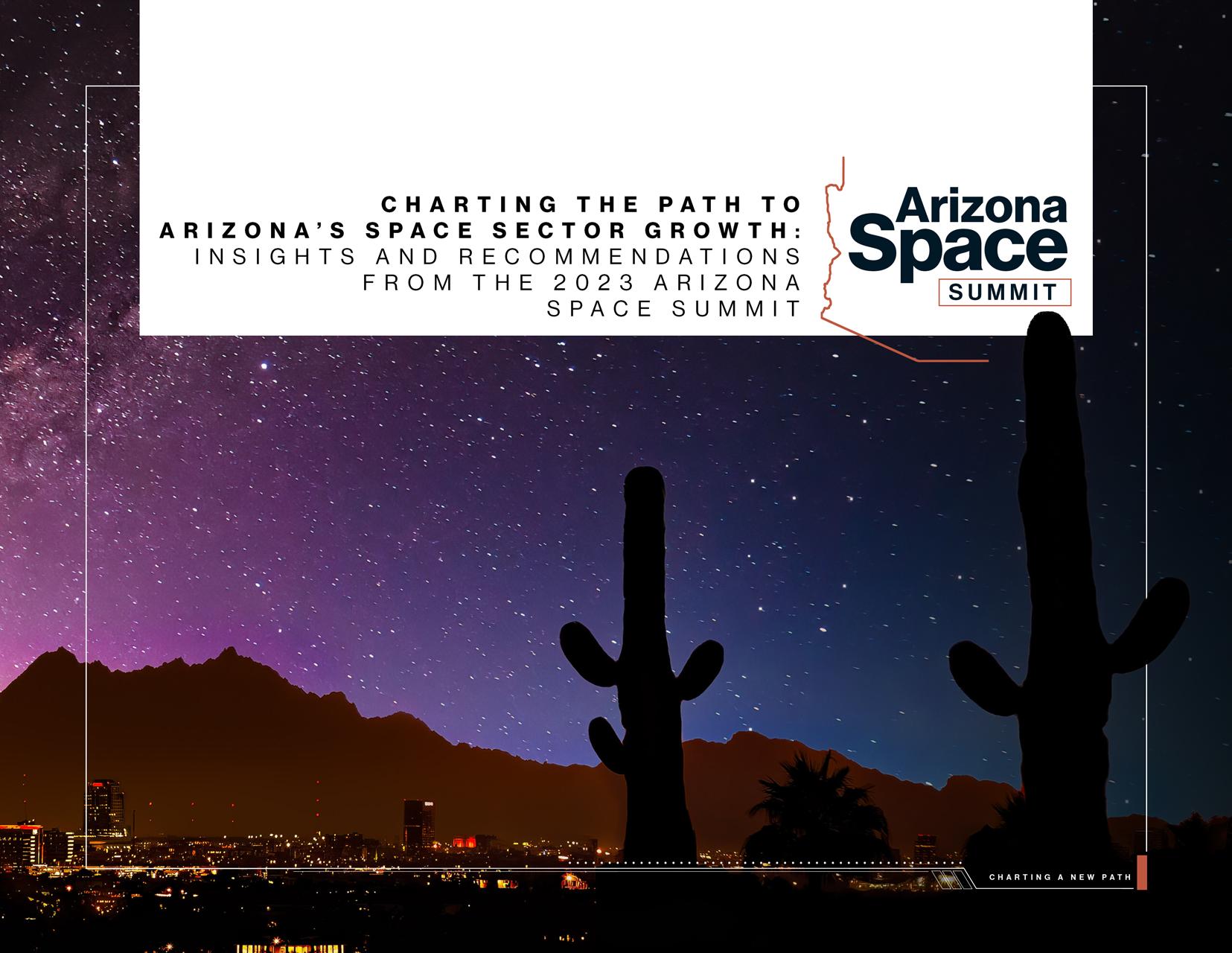
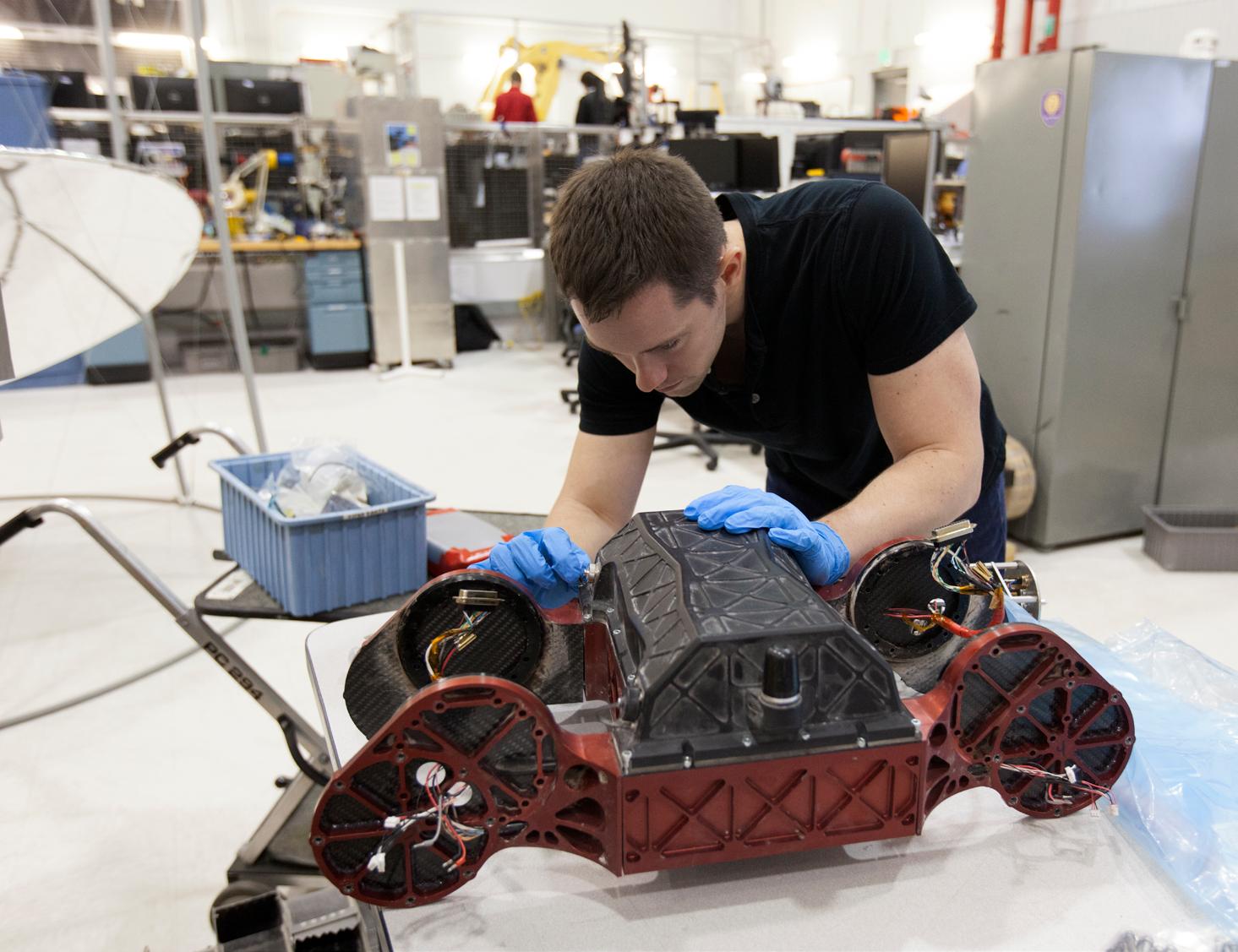


 — Governor Katie Hobbs
— Governor Katie Hobbs


